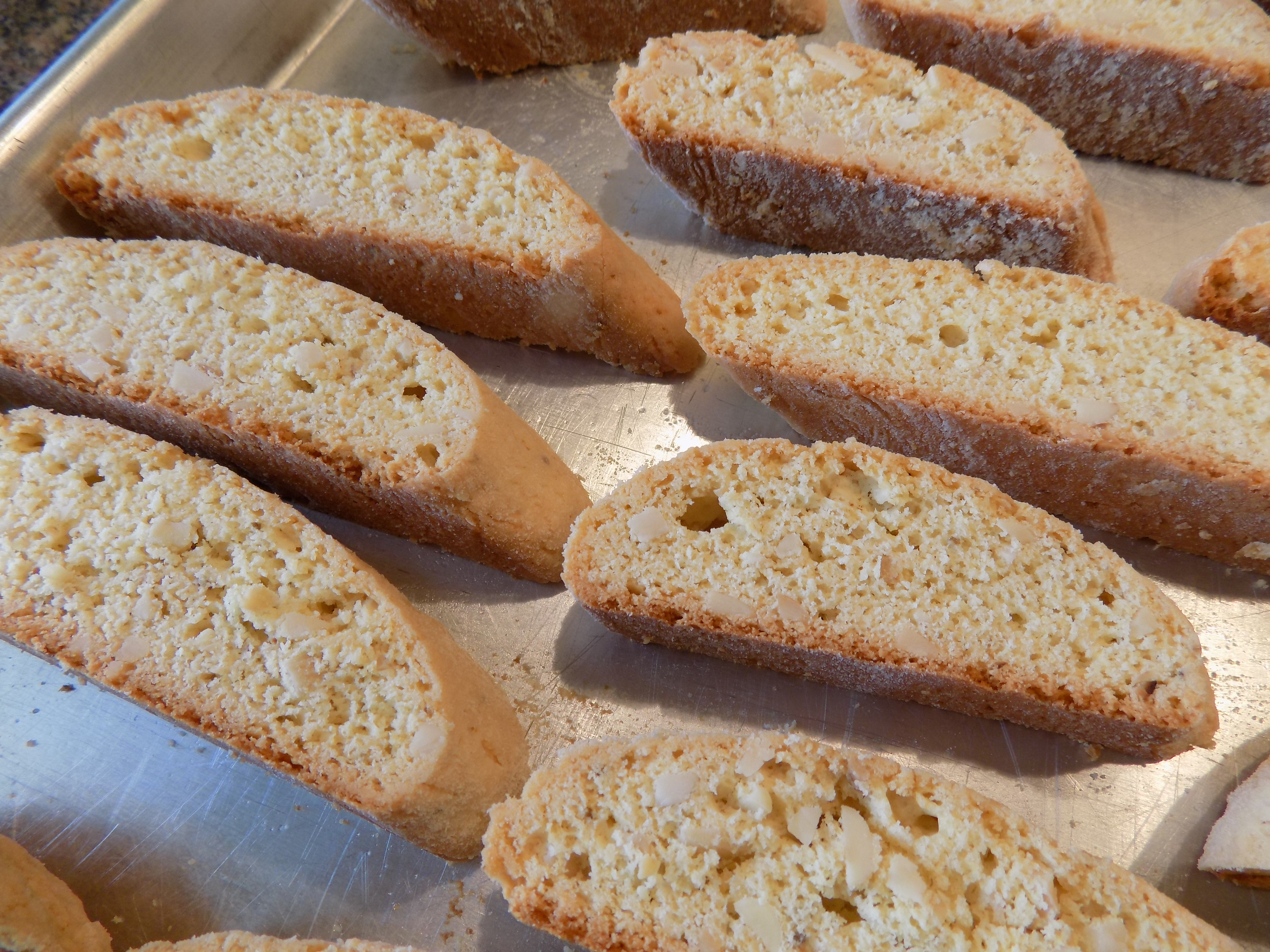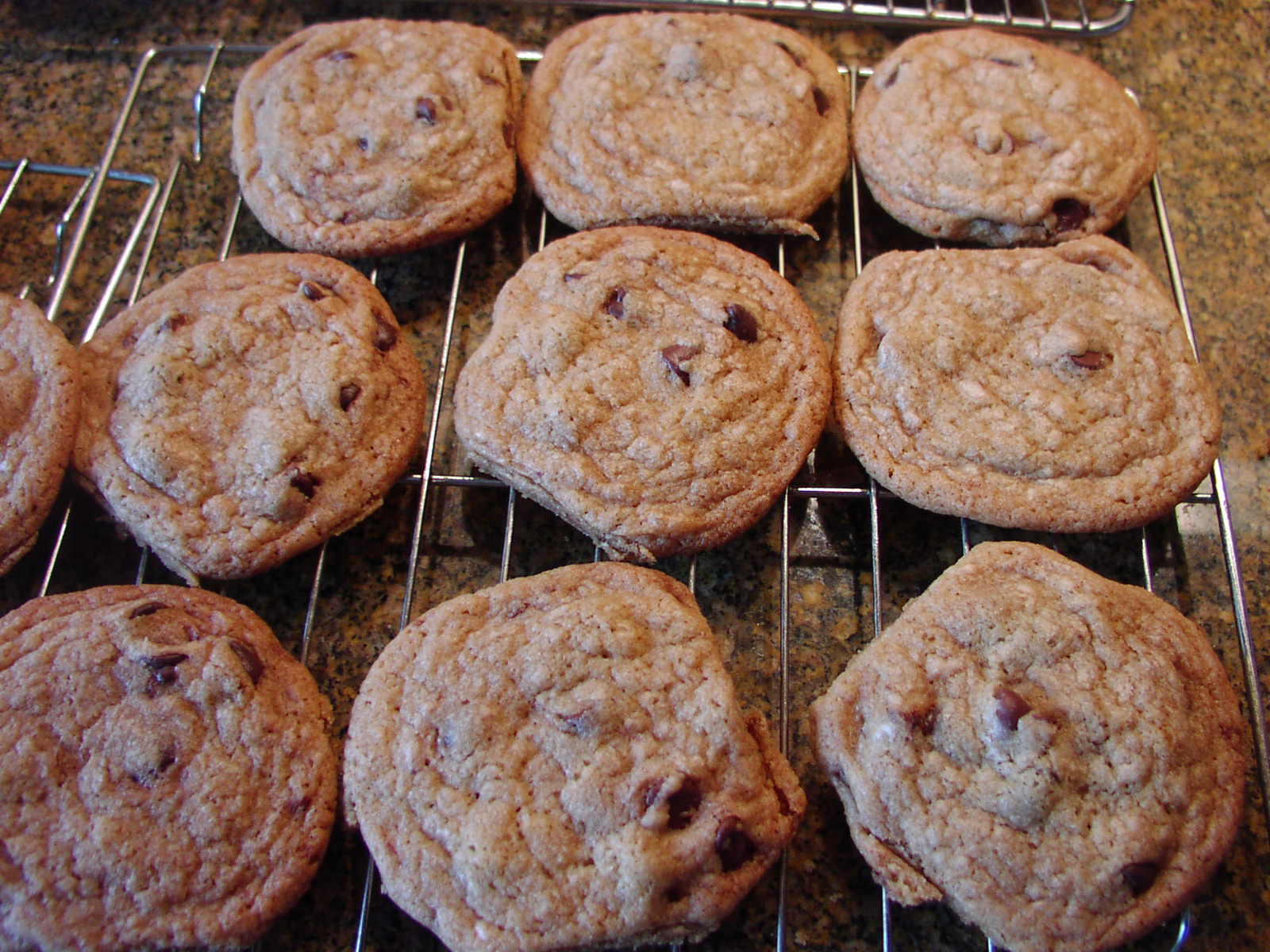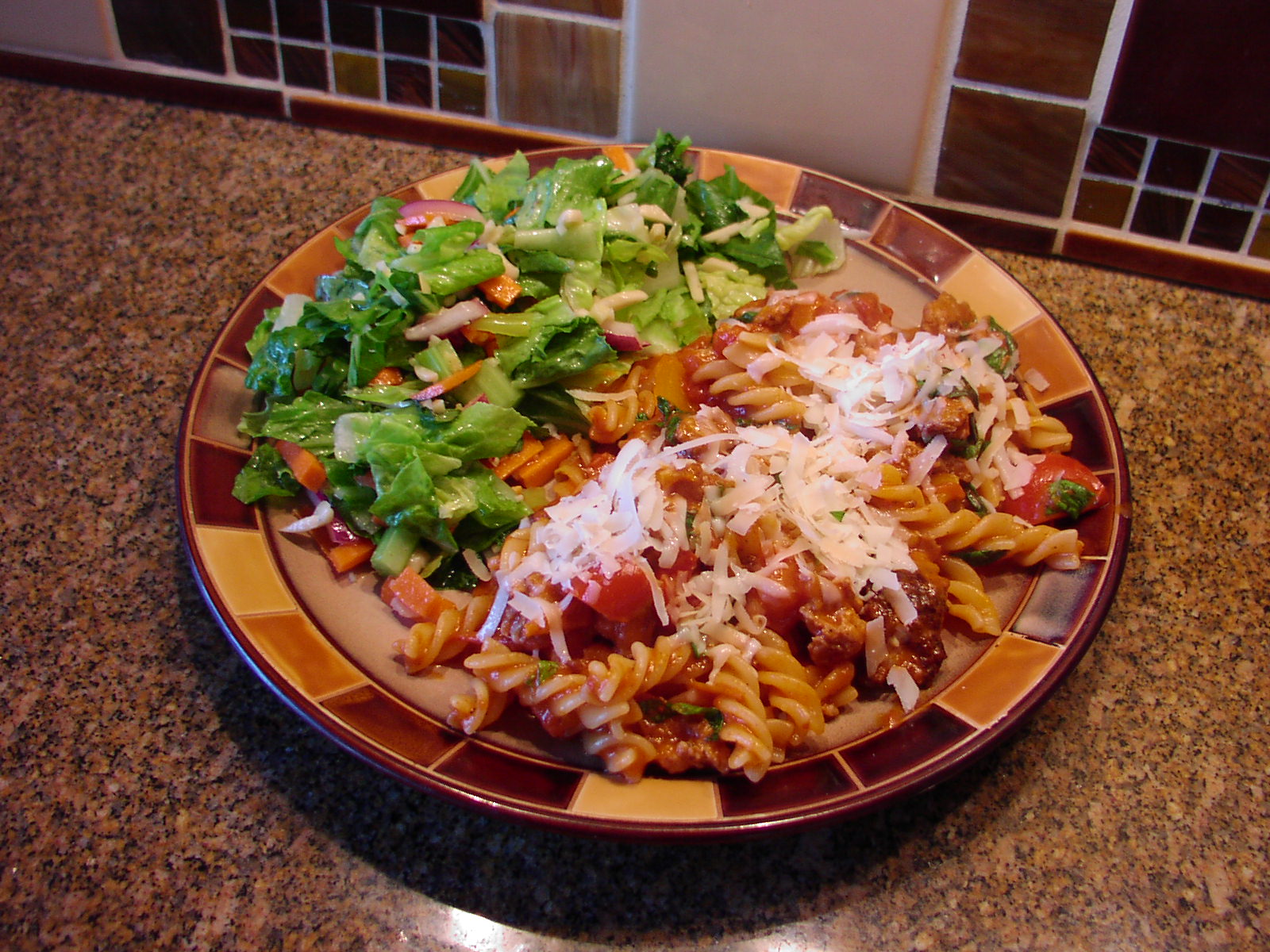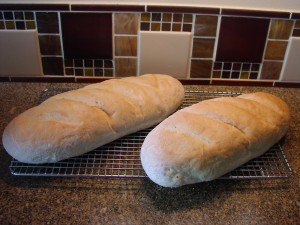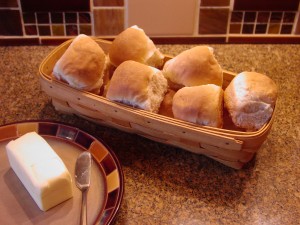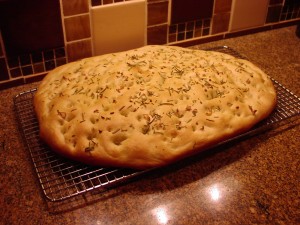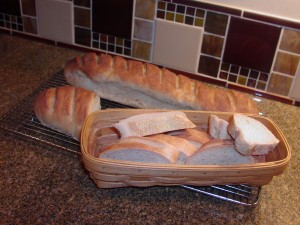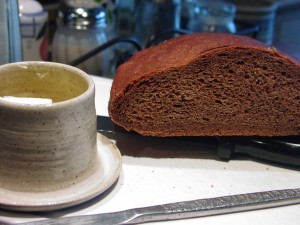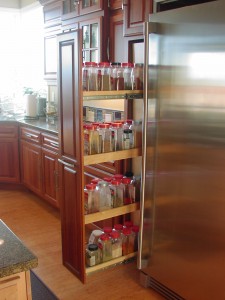Soup is one of the easiest, most economical and delicious foods you can prepare. I love to serve a small bowl of soup as the first course at a dinner party. On weekends I often start a pot of soup right after breakfast to serve at lunch time. And one of our favorite dinners is a big bowl of hearty soup with a warm sourdough loaf and a nice glass of wine. I never feel that I have stinted my friends or family when I serve soup. I truly believe that good soup is at the heart of excellent cooking. Because soup is a blend of ingredients that offer layers of flavor and texture, it is important to always use the best and freshest ingredients. It’s that wonderful blend of flavors that make our taste buds sing. Homemade soup is also the best way I know to get children to eat their veggies.
In my opinion, the best way to learn to make great soup is to follow a recipe. This is where you depend on your family and friends. If your Aunt Martha, for example, makes the best stew you have ever tasted, ask her for her recipe. Then follow the recipe. I know that sounds like no fun at all, but believe me following a recipe is the best way to ensure success while you are still in the learning phase. And I don’t mean “kinda/sorta” following the recipe, I mean following it to the letter. After you have mastered a few recipes, then try adding some of your own ingredients. Remember, no one becomes a master craftsperson (and that’s my definition of a good cook) until they do the basics. It’s just the same as the answer to the old question “How do you get to Carnegie Hall?” Answer: Practice, practice, practice! How do you get to be a good cook? Practice, practice, practice!
Since many recipes are not written for someone who’s cooking skills are still rudimentary (my own, for example), I thought I would lay out my own soup making basics. Hopefully they will help you if the recipe you are trying to follow does not include detailed directions. (Trust me, Aunt Martha will only give you the ingredients. If you are really a favorite of hers, she will tell you how much of each ingredient. What she won’t give you however, no matter how much she loves you, is how to make a cream sauce, how long to sauté the vegetables, or when to add each ingredient.)
BASIC GUIDELINE FOR PREPARING DELICIOUS SOUP:
PROPER COOKWARE:
Soup cooks best in a lidded heavy gauge stainless steel pot (like Cuisanart or Bourgeat) or in an enameled cast iron pot like LeCreuset. Most soups need a period of time to simmer. This cooking time allows meat to tenderize, dried beans to rehydrate, vegetables to become tender and flavors to develop. With a heavy duty pan, you can turn the heat to low and feel confident that the bottom of the pan is heating evenly and your precious ingredients are not burning. (That doesn’t mean that you don’t have to give the pot a stir once in awhile.)
GOOD INGREDIENTS:
MEAT – Cut meat into bite size pieces, unless of course you are starting with a ham hock or some other meat on bone product. Beef, lamb, pork, bacon, and some sausages go in at the beginning of the cooking time. Other sausages, like Andouille or Linguica might be added in stages (1/2 at the beginning of the cooking time to flavor the broth and the second half towards the end of the cooking time for a fresh burst of flavor). Some recipes will ask that you brown the meat before adding other ingredients. Browning meat has 2 benefits. First it seals in juices by caramelizing* each piece of meat, and secondly, the wonderful brown bits left on the bottom of the pan provide a lovely base for a rich broth. *Caramelization is a culinary phenomenon that occurs when carbohydrates like sugar are heated to temperatures of 300°F or higher and when proteins in meat are heated to temperatures of 310°F or higher, causing them to turn brown.
CHICKEN – Most of the time, I add cubed, raw chicken pieces towards the end of the cooking time. I don’t like the texture of chicken that has been cooked for hours. (I call it “string” chicken.) And if you are adding left over chicken or turkey, do so at the last moment. I often buy a rotisserie chicken when I am at Costco. They are delicious, inexpensive, and convenient. The first evening I usually cut up the chicken and let Mr. C. take his pick. (He loves dark meat so I don’t have to worry about him eating the breast.) The second day I use part of the chicken breast to make chicken salad for lunch. Then, the next day I use the last of the chicken for soup. Three meals out of a $6.00 investment, not bad!
VEGETABLES – Cut vegetables smaller than the meat, ideally of similar size. Add vegetables in order of time it takes to become tender (or crisp tender). The following is my usual order for adding vegetable to soup:
– Broth Vegetables: Onion, shallots, carrot, celery, garlic, and canned tomatoes (i.e. diced, paste, sauce). I usually add these vegetables along with the water or broth. I like the onion and shallot pieces to all but disappear, the carrot to cook completely and lose its’ independent flavor, and the celery and garlic to be reduced to a background texture and flavor.
– Chunks of potato, red, green, yellow pepper, turnip, fresh green bean pieces, halved or quartered mushrooms, beets, carrot* pieces come towards the end of the cooking time, because they only take 20-30 minutes to cook
– Broccoli, cauliflower, cabbage, kale take about 10 minutes to come to crisp tender
– Frozen peas, corn, zucchini slices, spinach just need to be warmed
– Garnish Vegetables: Sliced green onions, shredded carrots, etc. – add on top of each bowl of soup as a garnish
*Please note, if you want to taste carrot in your soup or stew, add additional carrot pieces at this point. I don’t care for the flavor of cooked carrots, so I only use them as a broth vegetable. They are there for color and vitamin content, but I don’t have to taste them!
LIQUID – I mostly start soup with canned stock/broth*, or water infused with beef, chicken, or vegetable base. (You can find jars of beef, chicken, and vegetable base at any grocery store.) Using broth rather than water starts your soup off with a great base in which to keep layering in additional flavor. Red and white wine, cans of tomato sauce or paste, hot sauce (I prefer Frank’s Red Hot), Worcestershire sauce, lemon juice, and beer, also are great liquids used to enhance the flavor of soup broth.
*Stock: A strained liquid that results from simmering meats, fish, herbs, and vegetables in water. It is usually made by browning bones, vegetables and other ingredients before they are cooked in the liquid for hours.
*Broth: A flavorful, aromatic liquid made by simmering water or stock with meat or vegetables. Generally speaking, stock has a heartier, richer flavor than broth because it is made with browned ingredients including bones. Broth has a more subtle flavor because it is made with meat only, no bones. In most recipes stock and broth can be used interchangeably.
HERBS AND SPICES – I truly believe the best soups include a blend of dried herbs and spices and fresh herbs. I almost always start my soups with what I call my “broth herbs”. These are dried herbs and/or spices that provide a subtle background flavor. Then I often finish the soup with a small garnish of the fresh version of the dried herb I used in the broth.
– Broth Herbs and Spices: Dried bay leaves, basil, cayenne, coriander, cumin, curry, marjoram, oregano, parsley, paprika, red pepper flakes, rosemary, sage, savory, and thyme.
Hint about spices – I buy spices in bulk where available (Winco has a nice selection) and the rest in large containers at Cash and Carry. And yes I know “real” cooks would tell you that spices lose their flavor after about a year. To this I say “bologna” (or words to that effect). OK, the ideal would be to use your spices in a timely manner, but I use dried herbs and spices with sheer abandon, and if I bought them in those sweet little mini ounce jars, I would sorely cut into our retirement funds. So I say – buy in bulk, use your spices until they are gone, and replace when needed.
– Fresh Garnish Herbs: Basil, Marjoram, Oregano, Parsley, Rosemary, and Thyme
FINISHING TOUCHES – Many soups are made even better with a little “something” added on each serving – a drizzle of olive oil, dollop of sour cream, grated cheese, chopped onion, fresh parsley, homemade garlic croutons (recipe to follow), just to mention a few. Many recipes will provide you with ideas for garnishes. Soup can be a little boring to look at, so a pretty and tasty garnish is a very nice touch.
BASIC GUIDELINE FOR MEAT (HAM HOCK, LAMB, BACON, SAUSAGE OR GROUND BEEF) AND BEAN SOUPS (INCLUDING CHILI):
1) Place meat in large soup pot (ham hock, sliced sausage, etc.) OR
2) Fry bacon or brown bulk meats such as Italian sausage or ground beef in 1-2 tablespoons oil (Canola or olive)
3) Add broth vegetables (some recipes ask you to sauté the vegetables before adding liquid)
4) Add liquids (water, stock, wine, tomato sauce, etc.)
5) Add washed beans (or soaked beans)
6) Add broth herbs, kosher salt (go light), and freshly ground black pepper
7) Bring to boil, reduce heat, cover and simmer until meat and beans are tender
8) Add additional vegetables in order of length of cooking time (This ensures even cooking and prevents mishaps like crunchy or mushy potatoes)
9) Adjust seasoning (salt and pepper)
10) Stir in heavy cream, sour cream, lemon juice, etc. – do not boil after this addition
11) Add last minute herbs (parsley, basil, etc.)
12) Place garnishes such as chopped onion, grated cheese, sour cream, chunks of feta cheeses, etc. on the table
13) Ladle soup into bowls
14) Serve
BASIC GUIDELINE FOR CHICKEN OR TURKEY SOUP WITH NOODLES:
1) If you have the time, place pieces of chicken (with bone and skin) on a rimmed baking sheet. Sprinkle with kosher salt and freshly ground black pepper. Bake at 400 degrees for 45 minutes or until very brown. Allow to cool and cut chicken meat off the bones and set aside. (If you don’t have the time to bake the chicken first, put it in the pot, and begin with step 3. When the chicken is just done, remove from broth and allow to cool. Then cut off the chicken, set aside, and return the bones to the broth.)
2) Place bones in large soup pot
3) Add chicken stock
4) Add broth vegetables
5) Add broth herbs, kosher salt (go light), and freshly ground black pepper
6) Bring to boil, reduce heat, cover and simmer for about an hour
7) Remove bones
8) Add cooked noodles (Unless recipe specifies that you cook the pasta in the soup, cook pasta separately to al dente in boiling, salted water.)
9) Add reserved cooked chicken
10) Adjust seasoning (salt and pepper)
11) Ladle soup into bowls and garnish with herbs or veggies (parsley, chopped green onion, etc.) BTW – thinly sliced green onion added just before serving has become our ONLY way to eat chicken or turkey soup.
12) Serve
BASIC GUIDELINE FOR THICKENED SOUP OF STEW:
1) Place meat in large soup pot (in some cases you will brown the meat first)
2) Add broth vegetables (some recipes ask you to sauté the vegetables before adding liquid)
3) Add liquids (water, stock, wine, tomato sauce, etc.)
4) Add broth herbs, kosher salt (go light), and freshly ground black pepper
5) Bring to boil, reduce heat, cover and simmer until meat is tender
6) Add additional vegetables in order of length of cooking time (This ensures even cooking and prevents mishaps like crunchy carrots or mushy potatoes)
7) Adjust seasoning (salt and pepper)
8) Depending on how thick you want your soup or stew, place 3 tablespoons water in a small bowl and whisk in 1 tablespoon flour of cornstarch. Then whisk this mixture into broth and bring to boil. If not thick enough, repeat process until you reach desired thickness.
9) Add last minute herbs (parsley, basil, etc.)
10) Ladle soup into bowls and garnish with herbs or veggies (parsley, chopped green onion, etc.)
11) Serve
BASIC GUIDELINE FOR CREAM SOUPS:
1) Melt butter or oil in heavy pan
2) Sauté vegetables, if any, according to the recipe
3) Whisk in thickening agent (flour, cornstarch, etc.) Let burble for a minute or two.
4) Whisk in liquids (except last minute additions like sour cream, heavy cream or lemon juice)
5) Add seasonings
6) Bring to boil, reduce heat, cover and simmer according to recipe
7) Add additional ingredients liked cooked meat or cooked vegetables
8) Add final ingredients like sour cream or cognac
9) Adjust seasoning (salt and pepper)
10) If cheese is called for, remove soup from heat and stir in cheese
11) Ladle into bowls and add last minute garnishes like herbs (parsley, basil, etc.) or homemade croutons (my personal favorite) Recipe for Homemade Croutons to follow.
12) Serve
*Crouton recipe under THIS & THAT

